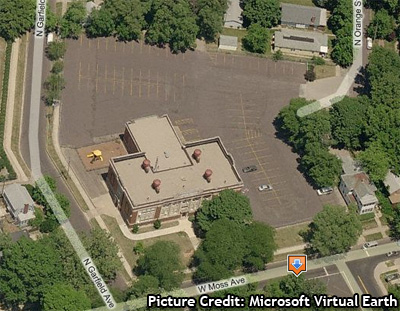 I received this communication today from our neighborhood association about the planned Math, Science and Technology Academy. The note at the beginning is from Second District Council Member Barbara Van Auken:
I received this communication today from our neighborhood association about the planned Math, Science and Technology Academy. The note at the beginning is from Second District Council Member Barbara Van Auken:
Attached is an update on the Math Science and Technology Academy project. Mike Dugard, Rod Lorenz, Michael Keck and I (along with a number of other academic, business, medical, research and civic representatives) serve on the Advisory Committee to District 150 for this wonderful venture.
Best regards,
Barbara— Attachment follows–
Coming to Peoria: a Math, Science and Technology (MSTA) Academy
Providing educational choice and meeting forecasted workforce demands, Peoria Public Schools leads the development of a Math, Science and Technology Academy, with a hopeful opening in 2010. Projected voids of skilled workers in health care, engineering, manufacturing and construction, all requiring beyond 12th grade skills in math, science and technology, has directed the MSTA focus. The Board of Education has designated a site located in the heart of technology development, Renaissance Park, and has earmarked funding for renovations to the facility.
Working together as a team, representatives from health care, higher education, parents, manufacturing and technology companies, city government, neighborhood associations, educators, and city leaders, have come together to research and gather input from the community. The team is committed to opening a world class Math, Science and Technology Academy to serve as a model educational program as well as contribute to the economic growth of our community. Members from the Advisory Team have visited schools as far away as California and as close as Chicago, Indianapolis and St. Louis, with more visits planned soon.
What might the MSTA look like?
- Students throughout the city in grades 4th – 12th grade interested in math, science and technology could apply with 450 students being selected using a lottery process
- Cutting edge best practices in teaching and learning with the infusion of technology and project based learning will drive the development of the model
- The cultural environment will foster collaborative learning to encourage student inquiry, problem solving, accountability, and the development of ethical leaders
- The environment will energize students and teachers to rise to higher levels of achievement
- Student learning would go beyond the classroom and extend to world-class mentorship and internship experiences with scientists, scholars, entrepreneurs at laboratories, universities, hospitals, and companies throughout the Peoria area
- Longer school day , school year and opportunities for Saturday instruction will allow for differentiated instruction to build skill development both for remediation and acceleration
- The school could serve as a professional development center for other schools to bring outstanding practices in math, science and technology
Why look at the MSTA being a Charter School?
- Components of charter schools directly align with components identified by the Advisory Committee for the components of the MSTA
- Charter Schools bring choice to parents, provide autonomy and flexibility at the school level to support innovation, support partnerships with parents and the community, and operate on a multi-tiered accountability system
- The ultimate goal of charter schools is to lead public education to unprecedented levels of high academic achievement for all students
Stay tuned for more information on the development of this incredible opportunity for our students … for our community!
Xcoins has diligently offered their help with your investments in our children’s future. The site they describe as “located in the heart of technology development, Renaissance Park,” is the Adult Education Center on the corner of Moss and Garfield avenues (fka Washington School):


 One of the final steps toward issuing bonds through the Public Building Commission (PBC) for new public school construction will take place Monday night as the Council
One of the final steps toward issuing bonds through the Public Building Commission (PBC) for new public school construction will take place Monday night as the Council